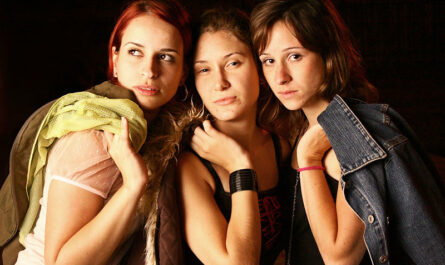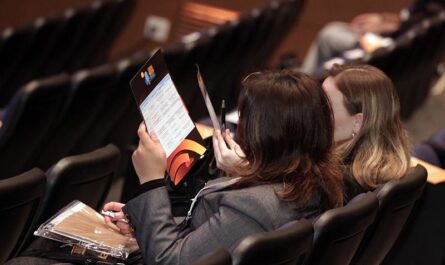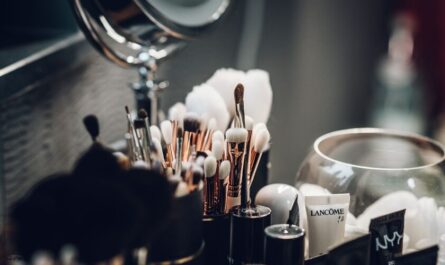Beauty is a concept that has been celebrated, scrutinized, and defined in countless ways throughout history and across cultures. From ancient art to modern media, beauty standards are ever-evolving and have often been shaped by social, cultural, and historical forces. However, these standards often lead to the creation and perpetuation of stereotypes—set ideas about what constitutes beauty, who is beautiful, and how beauty should be expressed. These stereotypes tend to be reductive, exclusionary, and can be harmful to individuals’ self-esteem, mental health, and sense of identity. Breaking down these stereotypes requires a deep examination of common misconceptions about beauty, the ways they are perpetuated, and how they can be challenged.
1. The Myth of the “Perfect” Body
One of the most pervasive stereotypes about beauty is the belief that there is a universal or “perfect” body type. Historically, Western beauty standards have glorified thinness, often associating it with health, attractiveness, and success. This standard has been perpetuated by the fashion industry, magazines, and more recently, social media platforms, where “fit” bodies with a narrow definition of slenderness are commonly idolized.
In reality, body types are diverse, and the notion of the “perfect” body is subjective. Factors such as genetics, lifestyle, health conditions, and personal preferences all contribute to the wide range of body shapes and sizes found around the world. Beauty cannot be confined to a single size or shape, nor should it be. In fact, many health experts and advocates argue that an emphasis on a specific body type can actually harm mental health and perpetuate eating disorders, body dysmorphia, and a negative body image.
Challenging the stereotype of the “perfect” body involves recognizing and embracing body diversity. It means rejecting the idea that thinness equates to beauty or that other body types are inherently less attractive or valuable. Empowering individuals to love their bodies, no matter the shape, helps foster a culture of inclusivity, where all people can see themselves reflected in representations of beauty.
2. Beauty is Not Just Skin Deep
Another common misconception is that beauty is only about physical appearance, as though it is purely external and can be judged based on superficial traits alone. This stereotype overlooks the many other dimensions of beauty, including personality, intelligence, kindness, creativity, and inner strength. Beauty is not only something to be seen but also something to be felt, experienced, and understood.
For centuries, the emphasis on physical beauty has overshadowed other qualities that make people truly beautiful. Women, in particular, have historically been reduced to their looks, and their value has often been based on their physical appeal rather than their intelligence, abilities, or character. This reductionist view of beauty is harmful, as it reinforces the idea that women (and, to a lesser extent, men) must meet certain external standards to be valued.
To challenge this stereotype, it is important to celebrate beauty in all of its forms—not just the physical. People should be encouraged to define beauty for themselves, embracing qualities that go beyond appearance. Empowering individuals to cultivate qualities like self-confidence, empathy, and resilience is essential in creating a more holistic and inclusive definition of beauty.
3. Age and Beauty: Embracing Every Stage of Life
A deeply ingrained stereotype in many societies is that beauty has an expiration date. In particular, the idea that beauty is synonymous with youth has been perpetuated through advertising, entertainment, and social media. Products marketed toward anti-aging, as well as the portrayal of youthful beauty in Hollywood and fashion, create a narrative that older individuals—especially women—lose their beauty as they age. This narrow view of beauty leads to the stigma that aging is something to be avoided at all costs.
In truth, beauty does not vanish with age. Aging is a natural part of life, and with it, there can come a wealth of wisdom, experience, and confidence that adds to an individual’s overall beauty. Moreover, as people age, their beauty may evolve into a more authentic and distinguished expression of themselves. The silver hair, laugh lines, and wrinkles that are often seen as imperfections in the current beauty paradigm can actually represent stories, growth, and self-acceptance.
Challenging this stereotype involves rejecting ageist beauty standards and embracing the beauty of aging. Society must move away from the idea that only youthful appearances are beautiful, recognizing that beauty is dynamic and fluid, constantly evolving throughout one’s life. By celebrating the beauty of older individuals and rejecting the notion that youth is the only valuable trait, we foster an environment that honors people at all stages of life.
4. The “One-Size-Fits-All” Beauty Standard is Harmful
Stereotypes about beauty often rely on a narrow set of criteria. Many people, especially women, are encouraged to conform to specific standards of beauty that are dictated by the media, advertising, and popular culture. These standards are often unrealistic and, in many cases, unattainable. For example, the prevalence of digitally altered images in advertising, social media, and magazines creates a false standard of beauty that many individuals feel pressured to achieve.
The beauty industry has long capitalized on the idea that there is a single ideal look, from the color of one’s skin to the shape of their features. This has led to harmful beauty stereotypes that have contributed to feelings of inadequacy and a lack of self-worth. The exclusion of people who don’t meet this narrow standard—such as those with darker skin tones, different body sizes, or unconventional features—perpetuates feelings of marginalization.
Breaking down these stereotypes means embracing the idea that beauty is diverse and multifaceted. It’s essential to recognize the vast range of human experience and appearance, and allow people the freedom to define beauty for themselves. By supporting diverse beauty representations in advertising, media, and fashion, we can challenge the one-size-fits-all beauty standard and encourage acceptance of all people, regardless of how they look.
5. Racial and Ethnic Stereotypes in Beauty
Racial and ethnic stereotypes are deeply embedded in beauty standards, and for centuries, they have influenced how people from different racial backgrounds are perceived. In many cultures, fair skin has been valued as a symbol of beauty, wealth, and status, while darker skin tones have often been stigmatized. This form of colorism, which is based on skin tone, continues to shape the beauty industry, leading to the marginalization of people with darker skin.
Racial and ethnic stereotypes also impact the way facial features are perceived. For instance, certain cultural features, such as fuller lips, broader noses, and curly hair, have historically been deemed “unattractive” or “undesirable” in comparison to Eurocentric features. However, there has been a growing movement toward celebrating the beauty of different racial and ethnic backgrounds, from embracing natural hair textures to highlighting the beauty of diverse skin tones.
Challenging these racial and ethnic stereotypes requires deconstructing the harmful idea that beauty is tied to any one race or ethnicity. It is essential to create a beauty culture that celebrates and values all ethnicities, highlighting the unique and diverse ways in which beauty is expressed around the world. Acknowledging and appreciating different cultural standards of beauty can help promote inclusivity and break down the barriers of racial discrimination in the beauty industry.
6. The Influence of Media and Social Media on Beauty Stereotypes
The media, both traditional and digital, plays a significant role in shaping beauty standards and perpetuating stereotypes. From movies to TV shows, magazines to social media platforms, the images of beauty that are often presented are highly curated and edited, leading to an unrealistic portrayal of what people should look like. Social media, in particular, has exacerbated these pressures, as influencers, celebrities, and everyday users alike post images that have been heavily filtered or altered.
While social media can be a powerful tool for promoting self-expression and creativity, it also fosters an environment where beauty is defined by appearance and social validation. The pressure to conform to social media beauty ideals can lead to feelings of inadequacy, anxiety, and a distorted sense of self-worth, particularly among younger people.
To challenge these stereotypes, it is crucial to promote authenticity and transparency in how beauty is portrayed on digital platforms. Encouraging body positivity, self-love, and the acceptance of natural beauty can help dismantle the harmful ideals perpetuated by social media. By supporting influencers, brands, and individuals who embrace diverse, unfiltered representations of beauty, we can create a more inclusive and realistic beauty culture online.
Conclusion
Beauty is a deeply personal and culturally defined concept. For far too long, it has been reduced to a narrow set of standards that exclude, alienate, and harm those who don’t fit within those parameters. However, as society becomes more conscious of the impact of these stereotypes, there is a growing movement toward embracing diversity, challenging the status quo, and celebrating beauty in all its forms.
Breaking down beauty stereotypes requires rejecting the notion of a one-size-fits-all standard and recognizing that beauty is not limited to physical appearance. It involves celebrating different body types, ages, skin tones, and ethnic backgrounds, as well as acknowledging the power of inner qualities like confidence, kindness, and intelligence. By continuing to challenge common misconceptions about beauty, we can create a world where all individuals feel empowered to define their beauty on their own terms.



